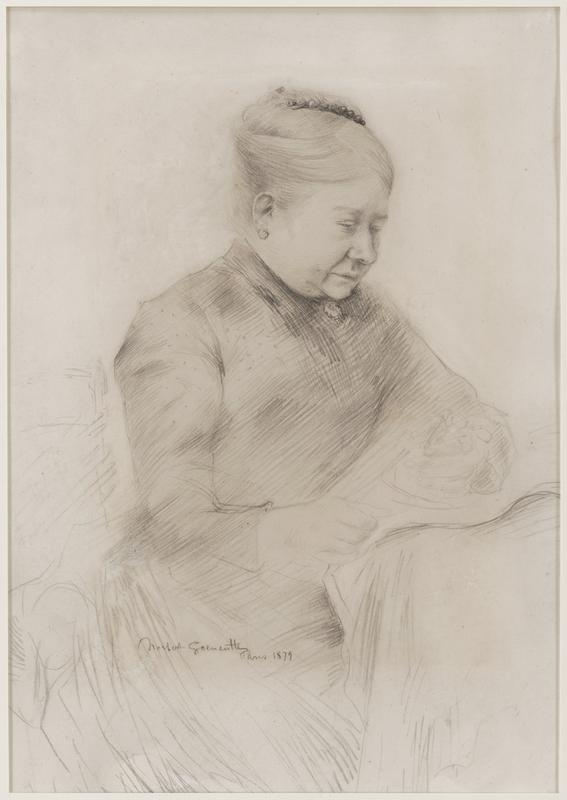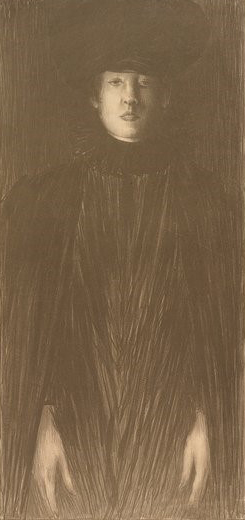
77. Norbert Goeneutte, Goeneutte’s Mother
| Artist | Norbert Goeneutte, French, Paris 1854–Auvers-sur-Oise 1894 |
| Title, Date | Goeneutte’s Mother, 1879 |
| Medium | Black crayon |
| Dimensions | 13 1/4 × 9 1/4 in. (33.7 × 23.5 cm) |
| Inscriptions + Marks | Lower center: Norbert Goeneutte / Paris 1879 |
| Provenance | [Galerie de La Scala, Paris, until 2012; to Weisberg]; Yvonne and Gabriel Weisberg, Minneapolis |
| Credit Line | Promised gift of Gabriel P. and Yvonne M.L. Weisberg, Minneapolis |

Like most artists trained at the École des Beaux-Arts, Norbert Goeneutte became a skilled draftsman. This sensitive study of his mother, seen in three-quarter pose, shows her seated at a table. She appears to be reading a newspaper or magazine whose floppy pages she grasps with her right hand, yet her reading habits are not Goeneutte’s main concern. His focus was her head and upper torso. Her aging features are closely studied, her hairstyle carefully transcribed.
A creative painter closely allied with the Impressionists, Goeneutte was also attracted to printmaking (fig. 1) through a friendship with Félix Bracquemond and Henri Guérard. Goeneutte died at age forty in Auvers-sur-Oise, the town where Vincent van Gogh had settled late in life. In 1895, the year after Goeneutte died, an exhibition of his work was organized at the École Nationale des Beaux-Arts in Paris.1 The curator and art historian Octave Fidièr noted that among the 350 paintings, pastels, drawings, and etchings on view, it was in drawing “that [Goeneutte] was able to show his personality best.”2
GPW
Notes
See Exposition rétrospective d’oeuvres de Norbert Goeneutte (1854–1894), à l’École Nationale des Beaux-Arts du 20 au 30 Avril 1895. The exhibition included 145 paintings, 17 pastels, 40 watercolors, and 61 drawings. There were also many graphic works. Among the drawings, no. 209, titled Portrait de ma mère (crayon), may well be the present drawing. ↩︎
Octave Fidièr, “Petite Expositions,” La Chronique des Arts et de la Curiosité supplément à la Gazette des Beaux-Arts, no. 17 (April 27, 1895), p. 162. ↩︎